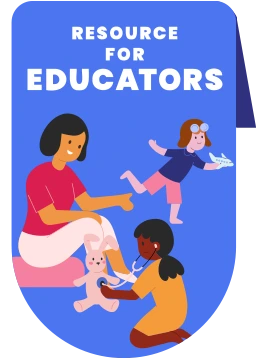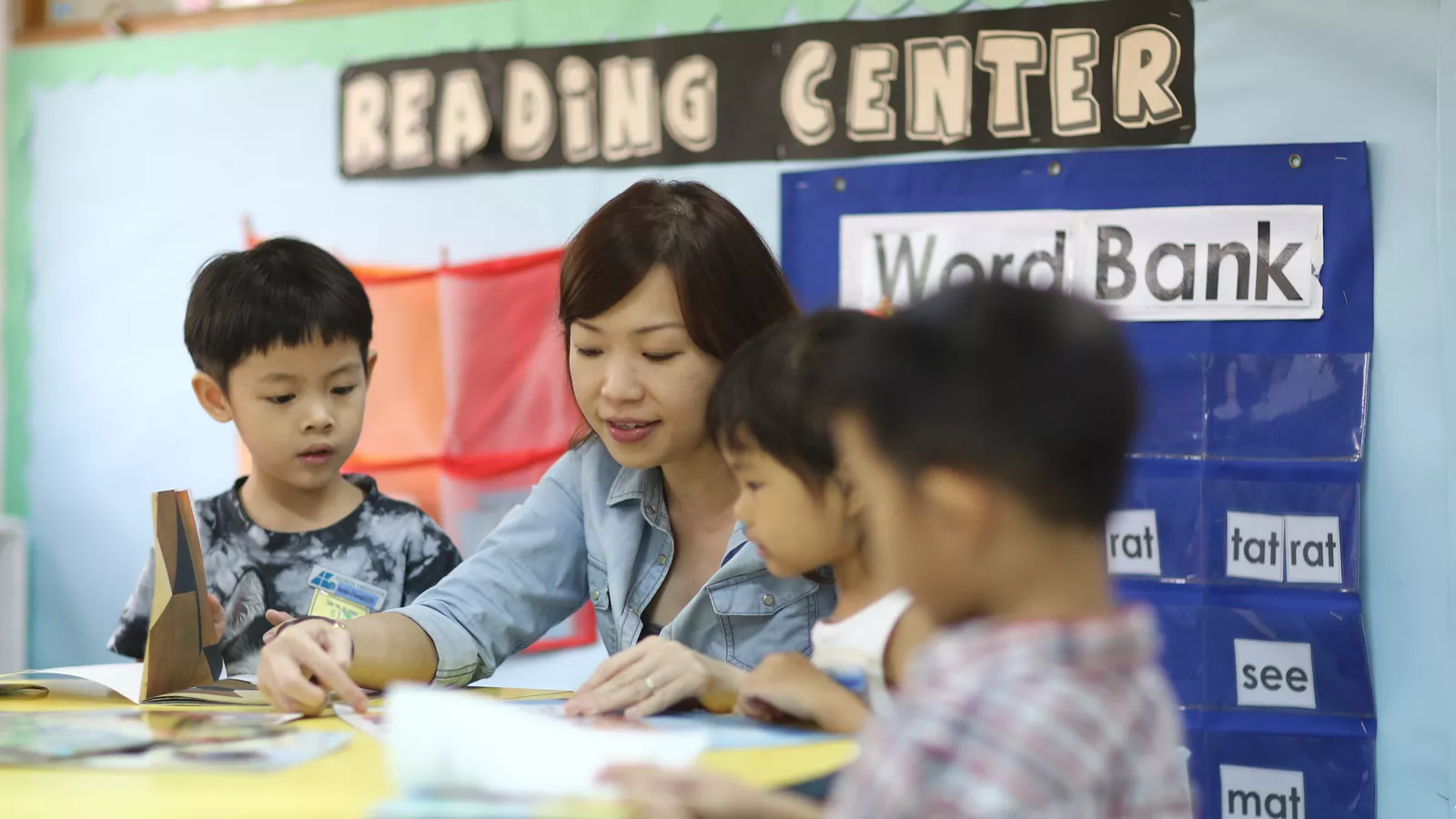“Inclusive practices ensure children with additional needs can get a better start when we create opportunities to better support their learning and development,” says Ms Nani Hartini Binte Mohthar, Senior Learning Support Educator, E-Bridge Pre-School.
For example, some children struggle with language and literacy skills, making it hard for them to follow a daily routine chart because they may not understand the words. Using a visual schedule can help, as it allows them to see a drawing that shows what the next activity will be.
Ms Nani, who received ECDA’s Outstanding Early Intervention Professional Award in 2024, has a wealth of inclusive practices to address mild learning difficulties. She credits much of her success to allied health professionals (AHPs) — such as occupational, speech and language, and educational therapists — who have mentored and collaborated with her throughout her journey.
TELL US MORE ABOUT THE ROLE OF LEARNING SUPPORT EDUCATORS.
Nani: Learning support educators (LSEds) serve as a bridge between preschool educators and AHPs. We identify areas where children need additional help and provide individualised support tailored to each child’s needs.
Our work takes us to different preschools, where we conduct early intervention (EI) sessions with children either on a one-to-one basis or in small groups. Some sessions are conducted by AHPs, so we observe how they use strategies and materials to address the child’s learning goals. In the classroom, we sit beside the child to assist them in learning experiences, observe dynamics, and suggest ways for educators to manage their classrooms more effectively.
WHAT ARE SOME OF THESE STRATEGIES YOU’VE SHARED WITH THE TEACHING TEAM?
Nani: One strategy is to incorporate movement into learning experiences to keep children engaged and focused. For a child practising how to write the alphabet, I might have them draw the letter “F” using sensorial methods engaging their eyes, fingers and feet. Once they remember how the letter looks, they can reproduce it on paper.
Another strategy is using open-ended, tactile learning resources that promote multiple skills development. For instance, colour-coded number blocks can help children visualise numeracy concepts like counting and sequencing, while also developing colour recognition and fine motor skills.
 Math manipulatives offer a range of learning opportunities, from grasping numeracy concepts and recognising colours to developing fine motor skills.
Math manipulatives offer a range of learning opportunities, from grasping numeracy concepts and recognising colours to developing fine motor skills.
HOW HAS COLLABORATING WITH AHPs INFLUENCED YOUR PROFESSIONAL JOURNEY?
Nani: I am grateful to have Ms Karen Wong, Principal Educational Therapist at KK Women’s and Children’s Hospital, as a mentor. Through her guidance, I’ve become more skilled at differentiating instruction and adapting materials to meet specific needs. When I was working with a child with low vision, Ms Wong recommended printing texts with high contrast in colours and a large font size of 36 points. I also placed materials on a slant board to make it easier for the child to read.
I also collaborate with AHPs at SPD, whose specialised knowledge and expertise help me strengthen my capabilities. Our conversations focus on best practices for inclusive classrooms and how to implement targeted interventions that address a child’s cognitive, physical or social-emotional development. Their support motivates me to go the extra mile to ensure every child feels supported and understood.
WHAT ARE SOME BEST PRACTICES YOU’VE LEARNED FROM THEM?
Nani: For language and literacy development, movable alphabet games using magnetic foam letters are a fun way to teach letter recognition and formation, letter-sound correspondence and early word building. Therapy putty — similar to playdough but with added resistance — helps children develop hand and finger strength, which is important for pencil grip and writing readiness.
 Ms Nani Hartini (left) co-conducts EI sessions with AHPs from SPD, using tools like therapy putty to help children build hand strength.
Ms Nani Hartini (left) co-conducts EI sessions with AHPs from SPD, using tools like therapy putty to help children build hand strength.
Educators can also use wands to promote turn-taking, and quiet books — fabric activity books with interactive elements like zippers, pouches and detachable pieces — to introduce the names and functions of objects.
HOW CAN EDUCATORS WORK WELL WITH LSEDs AND AHPs?
Nani: Make time to share regular updates and observations about a child with one another. If scheduling conflicts arise, send texts or emails. This feedback helps all parties, which ultimately benefits the child.
If disagreements over the intervention approaches occur, aim for a middle ground. As educators, you may have a different perspective as you spend more time with the child in class. Discuss with the LSEd and AHP, considering their inputs to develop a strategy that incorporates different views. Run it by them to see if it is workable.







